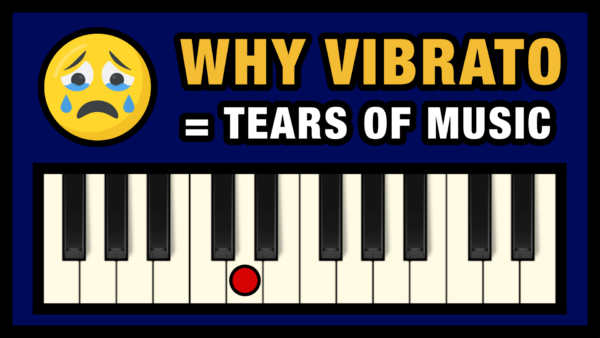 When you hear a violinist or vocalist add emotional vibrato to a long sustained note in music, you will feel a powerful emotional wave of beauty.
When you hear a violinist or vocalist add emotional vibrato to a long sustained note in music, you will feel a powerful emotional wave of beauty.
It feels like the note is crying, and with the passionate emotional playing of vibrato notes you might even feel tears forming because of its raw emotion.
Why is emotional vibrato so powerful? Let’s find out! =)
Why Vibrato in Music is so Emotional
First, let’s consider what vibrato is. A note that is played with vibrato, is actually swaying and pulsing in pitch. Meaning that instead of trying to stay pitch perfect, the vocalist or instrumentalist is performing the note with pulsating movement in pitch, on purpose.
The reason this feels so emotional, is mainly the added expression you get from that movement, and the light tension the pulsating pitch-tuning creates. But also, if you think about how it sounds when a person that is crying, tries to talk…you will hear that the pitch of the words will be more swaying and un-balanced.
So in a sense a vibrato played on an instrument, or vocals, is actually mimicking a bit how a crying voice sounds. Now think about the fragile and pure of heart sound of someone crying. And adding this character to your music with passionate vibrato on the notes, will explain why it adds a sad and emotional mood
Different Types of Vibrato in Music
When performing a vibrato, you can play it and shape it over time, in several ways. Here are the most important ones:
- Vibrato Strength (The Depth of the Vibrato)
- Vibrato Speed (The Pulsing Frequency of the Vibrato)
- Vibrato Gravity (Performing below/above or around the Pitch)
- Vibrato Curve (Delaying and Varying the Vibrato during the Note)
